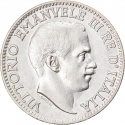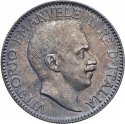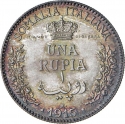You are about to finish your registration. Please check your mailbox (including spam folder). There should be a letter with a confirmation link. Check setting to make sure that your e-mail address is correct.
Send letter againDescription
Italian Somaliland, once a protectorate and later a colony of the Kingdom of Italy in present-day Somalia, was initially governed by Somali Sultanates in the north and various political entities in the south during the 19th century. Italy gradually acquired control through protection treaties in the 1880s.
Resistance to Italian expansion began in the 1890s with the Bimaal and Wa'dan revolts near Merca, coinciding with the anti-colonial Dervish movement in the north. After a two-year military campaign, Rome established authority over the entire region by the end of 1927.
In 1936, Italian Somaliland became part of Italian East Africa as the Somalia Governorate until Italy's loss in 1941 during World War II. British military administration followed until 1950, when it became a United Nations trusteeship under Italian administration. On July 1, 1960, the Trust Territory of Somalia joined with former British Somaliland to create the Somali Republic.
A prove is a type of trial strike, typically a non-circulating, non-legal tender coin with a slightly higher mintage than the usual pattern coin.
Engraver: Luigi Giorgi
Obverse

|
Depicts a half-bust of Vittorio Emanuele III facing right surrounded by legend. Engraver's name below. VITTORIO EMANVELE III RE D'ITALIA |
|---|---|
Reverse

|
Denomination in Arabic and Italian below the crown, date below, country name in Italian above surrounded by a wreath of flowers on both sides. The mint mark (R) above the date. "Prova" (a coin prototype) upper left. SOMALIA ITALIANA |
| Edge |





